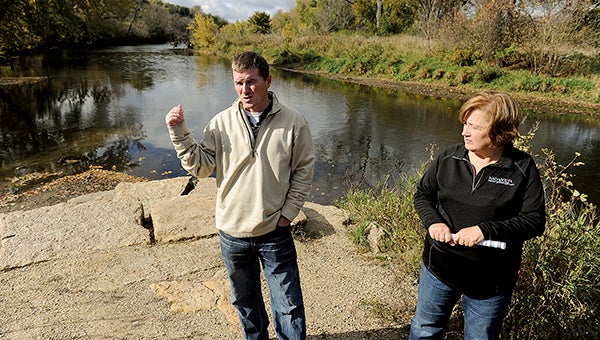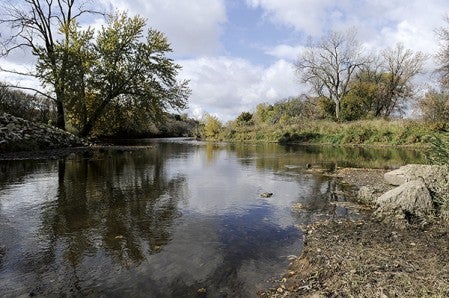Project could greatly reduce flooding, but needs major funding
Published 7:42 am Monday, October 28, 2013

Justin Hanson, resource specialist for the CRWD, and Bev Nordby, administrator for the CRWD, stand at the point where Dobbins Creek and the Cedar River meet in Driesner Park. Work at this point could reduce flooding by 8 percent. — Eric Johnson/photodesk@austindailyherald.com
Officials with the Cedar River Watershed District say they can significantly reduce flooding at a notoriously problematic spot in Austin, but they first need a huge favor from the state.
The CRWD recently submitted a request for $475,000 from Minnesota’s Clean Water Legacy fund for a project they say can reduce flooding by 8 percent at the Cedar River-Dobbins Creek confluence in Driesner Park. CRWD would also use $118,750 in tax levy funds to match the state funding to complete its Dobbins Creek Targeted Sediment Reduction project.
The project, northeast of Austin, would use three detention areas to trap water and slowly drain it over a 24-hour period to reduce peak flows. At the same time, detention areas could prevent 120 tons of soil from entering Dobbins Creek each year. That soil reduction could greatly improve the condition of East Side Lake, which continuously fills with sediment.

The Dobbins Creek runs into Turtle Creek behind Driesner Park and is part of a large scale product that could decrease flooding by as much as 8 percent.
Those planning the project with CRWD used the organization’s new hydrologic and hydraulic modeling maps and technology to identify the project area, which will require the cooperation of three landowners.
“This project’s purpose is to make incremental progress toward the long-term goal of removing the Cedar River and its tributaries, including Dobbins Creek, form the state’s impaired waters list,” Nordby said in a news release. “We are starting our efforts by focusing on areas where our modeling has revealed the greatest immediate effect possible.”
According to CRWD resource specialist Justin Hanson, the project tackles Austin’s flooding and sediment issues at the source. Standing on the bank in `Driesner Park on Thursday, Hanson looked over the river and described potential effects.
“This site upstream can actually have an 8 percent flood reduction right here,” he said.
CRWD employees hope the project will begin next fall. Yet the funding request could be a tough one to land. Competition for Clean Water Legacy funds is “incredible,” said CRWD Administrator Bev Nordby, as 244 applications have been submitted for just $14 million in available grants.

